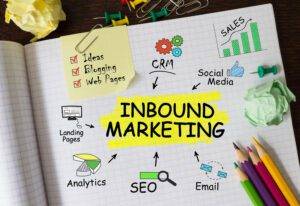
Have you been looking for ways to make people more aware of your brand? Do you wish to turn more leads into potential customers? All you need to do is implement an inbound marketing plan that will take your brand to the next level.
Business brands tend to make the mistake of using disruptive advertising. To excel in your brand, you don’t need to draw the wrong audience. In this blog post, you’ll be provided with the best strategies on how to implement an inbound marketing plan.
4 Key steps on how to implement an inbound marketing plan.
If you expect to see results, you must be practical about your inbound campaign. A well-executed plan will increase your brand’s visibility and ultimately lead to conversions. Listed below are four key steps to help you achieve your brand goals:
1. Create quality content and optimize SEO
Quality content is one that specifically addresses your customers’ needs. Your content, if valuable, can generate traffic and lead visitors to your website. One of the best ways to maximize content creation and generate traffic is through SEO.
Search engine optimization is a strategy that enhances your content’s visibility on search engines.
By using the right keywords relevant to your brand, your content can rank higher in the search engine results pages, attracting organic traffic.
2. Utilize social media platforms
Social media platforms remain a great way to engage a wider audience. Facebook, YouTube, and Instagram are three popular platforms you could leverage. On these platforms, you can share your content and engage your audience.
When using these platforms, your communication with your audience should be continuous. Engage in the comment sections and proceed with the marketing process. Also, ensure you cover topics related to your industry to maximize false leads.
3. Implement marketing automation
Implementing marketing automation can be the secret to your brand’s success. This process can be achieved through different automation tools, such as email campaigns and personalized content delivery.
Marketing automation is highly effective for lead nurturing. There’s a need to keep potential customers abreast of valuable content before they fully become loyal customers. The whole idea is to guide them through the buying journey.
4. Utilize lead magnets
Potential customers will only click if what you are offering them is valuable to them. Utilizing lead magnets can be a powerful tool in an inbound marketing plan. At this point, potential customers will share their contact information to find relevant resources.
Your lead magnets could be webinars, e-books, or white papers. Your lead magnets should align with your brand. For instance, a technology company might offer a free trial, while a consulting firm may provide downloadable guides.
Conclusion
Inbound marketing remains a tactical and practical process. To keep up with potential customers, you need to be consistent at all marketing levels. By following these steps, you have the marketing tools right at your fingertips.
The goal is to create a robust inbound marketing plan that attracts, engages, and converts your target audience and with time, you’ll build meaningful relationships with them.
Read more:
How to implement an inbound marketing plan






